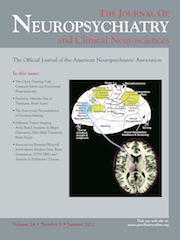Insomnia and Risk of Falling in Older Adults
To the Editor: Falls are one of the leading causes of morbidity and mortality in older adults, and can result in fractures, decreased independence in daily living activities, and nursing home placement.1,2 Epidemiological studies have identified older age, use of prescription medications, chronic medical conditions, poor balance, and sensory impairments as common risk factors for falls.2,3 Among prescription medications, hypnotics have been associated with an increased risk of falls.1,4 However, accumulating evidence suggests that insomnia itself may increase the likelihood of falls. For older patients requiring pharmacotherapy for insomnia, guidelines can be challenging. This report, while not eliminating clinical concerns about hypnotic-related falls and other side effects, discusses the pharmacologic treatment of insomnia in elderly patients.
According to the 1990 National Institutes of Health (NIH) Consensus Statement, hypnotics should be used for a short-term period and should only be used for older adults with short-lived insomnia.5 The Food and Drug Administration (FDA) has approved 10 medications for the treatment of insomnia. This includes benzodiazepines, non-benzodiazepines, and a melatonin receptor-agonist.6 None of these medications is specifically approved for the older population. The majority of studies suggesting hypnotics as a risk factor for falls did not investigate the possibility that insomnia itself, rather than the hypnotic, could be the reason for falling.1 There are several possible mechanisms by which insomnia may contribute to falls in elderly persons. These include increased activity in the dark, compounded by age-related impaired psychomotor performance, decreased balance, and decreased reaction-time.1,3
The underlying mechanisms of hypnotic medication-related falls appear to be related to psychomotor impairment, loss of balance, and next-day residual effects.3 The deleterious effects of hypnotics on psychomotor performance may be related to the individual pharmacodynamic and/or pharmacokinetic characteristics. The hypnotic effect is mediated through enhancement of GABA’s inhibitory effects on neuronal excitation, via binding to the α1 subunits of GABAA receptors.7 Benzodiazepines have nonselective affinity for GABAA receptors and may also bind to α2, α3, and α5 subunits,7 resulting in psychomotor impairment.8
On the contrary, the non-benzodiazepine hypnotics bind selectively to the GABAA receptor α1 subunits (zolpidem and zaleplon) or bind less preferentially to the GABAA receptor complex in the brain (zopiclone).7,8,9,10 Therefore, it reasonable to propose that non-benzodiazepine hypnotics have a lower tendency to impair psychomotor performance than benzodiazepine hypnotics. However, comparative data among the non-benzodiazepine hypnotics are not available in older adults with insomnia.7,8,10
Ramelteon, recently approved by the FDA, functions as a selective melatonin MT1 and MT2 agonist in the suprachiasmatic nucleus in the brain. It is effective in the treatment of circadian-rhythm sleep disorders; however, its efficacy in treating primary insomnia is limited. Since ramelteon does not show substantial binding to GABAA receptors, it is unlikely to affect psychomotor performance or cause next-day residual effects.11
Side effects may be minimized when hypnotics are administered at recommended doses and at bedtime.8,10 Reduced dosages are advised in older patients because of pharmacokinetic differences such as prolonged half-life, reduced drug clearance, increased bioavailability, and increased sensitivity to peak effects. It appears that next-day residual effects increase when using a hypnotic with a very long half-life or when administering a hypnotic late at night. However, The Study of Osteoporotic Fractures, found no statistically significant difference between long-acting and short-acting benzodiazepines on the risk of falls.3
The 2005 NIH State-of-the-Science Conference on Insomnia found no significant effectiveness for the off-label use of antidepressants, antipsychotics, anticonvulsants, and antihistamines for the treatment of insomnia, and concluded that their risks outweigh the benefits.6,12 It is essential to note that antidepressants, antipsychotics, and anticonvulsants have been implicated in falls.13
In summary, insomnia itself increases the likelihood of falls, and effective treatment of insomnia in older adults may help prevent falls. In the absence of well-controlled randomized trials, cautious use of hypnotic medications in older adults may provide treatment with a favorable side effect profile, including fall minimization. Medication factors to be considered include GABAA receptor α1 subunit selectivity, short elimination half-life and minimal next-day residual effects, bedtime administration, and age-adjusted dosing in older adults.
1 : Insomnia and hypnotic use, recorded in the minimum data set, as predictors of falls and hip fractures in Michigan nursing homes. J Am Geriatr Soc 2005; 53:955–962Crossref, Medline, Google Scholar
2 : Sleep problems as a risk factor for falls in a sample of community-dwelling adults aged 64-99 years. J Am Geriatr Soc 2000; 48:1234–1240Crossref, Medline, Google Scholar
3 : Sleep, insomnia, and falls in elderly patients. Sleep Med 2008; 9(Suppl 1):S18–S22Crossref, Medline, Google Scholar
4 : Risk factors for falls among elderly persons living in the community. N Engl J Med 1988; 319:1701–1707Crossref, Medline, Google Scholar
5 NIH Consensus Statement 1990 Mar 26-28;8:1–22. The Treatment of Sleep Disorders of Older People.Google Scholar
6 : Evidence-based recommendations for the assessment and management of sleep disorders in older persons. J Am Geriatr Soc 2009; 57:761–789Crossref, Medline, Google Scholar
7 : Zolpidem: an update of its pharmacology, therapeutic efficacy and tolerability in the treatment of insomnia. Drugs 2000; 59:865–889Crossref, Medline, Google Scholar
8 : Zaleplon: a review of its use in the treatment of insomnia. Drugs 2000; 60:413–445Crossref, Medline, Google Scholar
9 : Postural instability and consequent falls and hip fractures associated with use of hypnotics in the elderly: a comparative review. Drugs Aging 2005; 22:749–765Crossref, Medline, Google Scholar
10 : Zopiclone. An update of its pharmacology, clinical efficacy and tolerability in the treatment of insomnia. Drugs 1998; 55:277–302Crossref, Medline, Google Scholar
11 : Ramelteon: a review of its therapeutic potential in sleep disorders. Adv Ther 2009; 26:613–626Crossref, Medline, Google Scholar
12
13 : Influence of medications and diagnoses on fall risk in psychiatric inpatients. Am J Health Syst Pharm 2010; 67:1274–1280Crossref, Medline, Google Scholar



